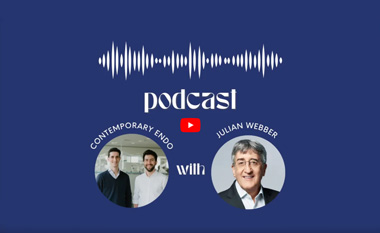Can we help? Are You in Pain?
If you are in pain we guarantee to get you out of pain quickly and save your tooth. If your dentist has confirmed you need root canal therapy, we will do our best to see you as soon as possible.
We will take a digital X-ray and carry out a number of tests to confirm the diagnosis. Usually, at the same appointment, we will be able to undertake the treatment and complete the case too. Your tooth will be saved and the discomfort will be over.
On occasion, Drs Webber, Lamb, and Patel will request a Cone Beam Computed Tomography (CBCT) scan to view very fine details inside teeth to provide the best diagnosis and treatment options. More details about CBCT scans can be found here
Your next step will be a crown from your dentist to protect the tooth. So, if you think you have a root canal problem, don’t delay, call us on: 020 7935 6393 or fax us on 020 7935 6060
Initially the symptoms can be mild, such as sensitivity to hot or cold, or both, or possibly discomfort when you bite. We recommend that if you have toothache or any of these symptoms, you should see your dentist for an x-ray and diagnosis. Doing nothing should not be an option.
You should make sure you see a dentist as soon as possible as you may need root canal treatment. If you have a complex problem, your dentist will most probably refer you to a specialist practice like the Harley Street Centre for Endodontics so your tooth can be saved. You may be given antibiotics and painkillers which will also reduce any infection and swelling. Opening up your tooth, removing the inflammed or infected pulp will quickly get rid of the problem
To find out why to see a specialist?
www.savingteeth.co.uk
With modern anaesthetic techniques there will be no pain. We will numb the part of the mouth which is being treated. That feeling of numbness usually subsides an hour or so after the end of your treatment.
For more about treatment:
www.savingteeth.co.uk
Your jaw may feel a little sore or the tooth may feel tender as the anaesthetic wears off. If necessary we will recommend over the counter medications. As for the tooth, you should soon enjoy the benefit of having a tooth which feels healthy again!
We recommend that you eat well before you come in for your appointment as your mouth may be quite numb for an hour or so after the root canal treatment.
We offer a sedation service for patients who find treatment difficult to cope with. If necessary, we can organise for a visiting anaesthetist to come to the practice. You will need to organise for someone to accompany you home afterwards. Where possible, we recommend conscious sedation.
What is conscious sedation?
Conscious sedation is the safe and effective administration of drugs that safely relieve anxiety, increase relaxation, make the patient comfortable and reduce pain. Many procedures can be performed safely, efficiently and cost effectively using conscious sedation.
Goals of conscious sedation and analgesia:
- Maximise the patient’s safety
- Minimise discomfort and anxiety
- Maximise success of the procedure
- Minimise recovery time
Benefits of sedation:
- Comfortable, practical and convenient for the patient and the surgeon
- Safe due to lower levels of medication administered
- Time saving due to the quick recovery and no need for hospital admission
- Economical since no hospital stay, less side effects, and minimal time off work
- Recovery after sedation is much faster than with general anaesthesia
Conscious sedation is probably the fastest growing area in anaesthesia care, and has become a very effective viable alternative to general anaesthesia for many surgical procedures. The patient will come in on the day of surgery and leave the same day usually within one hour after the operation. In addition, there is a significantly lower incidence of side effects with conscious sedation and the costs for conscious sedation are much lower than general anaesthesia.
Patient satisfaction is very high after conscious sedation – a recent survey of the experiences and satisfaction of patients show that 99.5% of patients would have sedation again. Conscious sedation is achieved with intravenous agents ( e.g. benzodiazepines, opiates, other sedative/anaesthetics) usually administered into a vein.
More information is available at http://www.sedationsolutions.co.uk/





